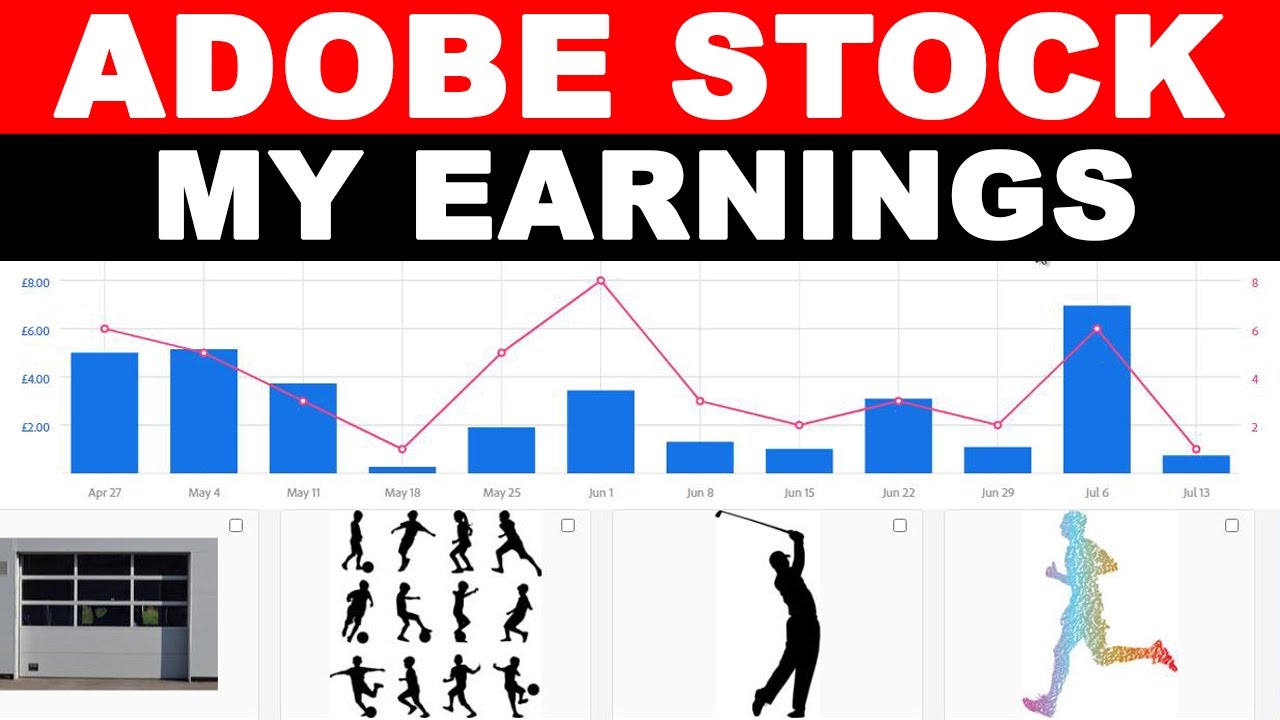If you’ve ever considered diving into the world of stock photography, Adobe Stock is a name that likely popped up on your radar. But why should you care about this platform? Well, let me paint a picture for you. Adobe Stock is part of the Adobe ecosystem, which means it integrates seamlessly with tools like Photoshop and Illustrator. This powerful offering enables photographers, designers, and creatives to sell their work while gaining exposure to millions of potential buyers.
So, whether you’re a seasoned pro with a thousand images or a newbie with a handful of awesome shots, Adobe Stock provides a platform where your creativity can shine and earn you money. Plus, with its flexible licensing options and an easy-to-navigate interface, it caters to various needs—from bloggers seeking images to businesses in need of high-quality visuals. Ready to see what makes Adobe Stock tick? Let’s dive in!
How Adobe Stock Works

Understanding how Adobe Stock operates is crucial for photographers looking to make some serious earnings. The process is user-friendly, which is a big plus for busy creatives. Here’s a breakdown of how it all works:
- Sign Up: First things first, you’ll need to create an account on Adobe Stock. It’s a straightforward process where you provide your details and agree to their terms.
- Upload Your Images: Once you’re registered, the next step is to upload your high-quality images. Adobe Stock has specific guidelines regarding size, quality, and content—so make sure you read up on those before submitting.
- Tag Effectively: After you upload, you’ll be asked to tag your images with relevant keywords. This is a crucial step because it helps potential buyers find your work. Use descriptive and accurate tags, and don’t forget to write an engaging description.
- Review Process: Adobe will review your submissions. If approved, your photos will be available for sale. This can take a little time, but be patient—you want your best work to shine!
- Set Your Prices: Adobe Stock operates on a royalty system. You earn a percentage of the sale every time someone purchases one of your images. The more popular your images, the more money you can make!
In a nutshell, Adobe Stock simplifies the process of selling your photos while providing you with the tools you need to succeed. The key is to stay proactive—keep uploading quality content and engaging with trends to maximize your earnings!
Also Read This: How to Create a Stunning Portfolio on Behance to Showcase Your Work
3. Factors Influencing Earnings

When it comes to earning money from Adobe Stock photos, several factors can significantly impact your overall income. Understanding these factors is crucial for maximizing your potential earnings. Let’s explore some of the key elements that play a role in determining how much you can make.
- Quality of Your Photos: High-quality images tend to perform better on stock photo sites. Ensure your photos are well-composed, properly lit, and professionally edited. Buyers are more likely to pay a premium for top-notch visuals.
- Relevance and Demand: Trending topics or seasonal themes can influence how often your photos are downloaded. Keeping an eye on current trends can help you create images that are more likely to be in demand.
- Keywording and Tags: Properly tagging your images with relevant keywords will make them more discoverable. This is crucial since a well-tagged photo can show up in more searches, increasing your chances of sales.
- Portfolio Size: The larger your portfolio, the more visibility your work gets. A diverse range of images can attract different buyers looking for unique content, potentially boosting your earnings.
- Promotion: Actively promoting your Adobe Stock portfolio through social media or personal websites can lead to increased exposure and sales. Building a personal brand can also attract more clients.
By focusing on these factors, you can enhance your chances of earning a steady income from your stock photography on Adobe Stock.
Also Read This: How to Post Your Portfolio on Behance
4. Payment Structure and Rates

Understanding the payment structure and rates associated with Adobe Stock is essential for anyone looking to monetize their photography. Here's a breakdown of how it works:
Payment Structure
Adobe Stock pays contributors based on the type of content sold, with different rates applied for photo downloads vs. video clips. Generally, earnings are determined by the user's subscription plan:
| Subscription Plan | Standard Photo Rate | Premium Photo Rate | Video Rate |
|---|---|---|---|
| Monthly Subscriptions | $0.33 per image | $0.52 per image | $8 per clip |
| Annual Subscriptions | $0.25 per image | $0.60 per image | $10 per clip |
Royalties: As a contributor, you earn a royalty share depending on the type of content sold. Contributors typically receive 33% for photos and 35% for videos from the sale price, which can vary based on user subscriptions.
In summary, knowing the payment structure and actively working on the factors that influence your earnings can substantially improve your financial success on Adobe Stock. It’s all about being strategic and understanding the nuances of the marketplace!
Also Read This: Alamy vs Shutterstock: Choosing the Right Platform for Selling Photos
Tips to Maximize Your Earnings

If you're diving into the world of selling stock photos on Adobe Stock, there are several strategies you can employ to boost your earnings. Let’s explore some practical tips that can help you maximize your revenue potential.
- Choose the Right Niche: Focus on niches that are in high demand. Research popular categories, such as business, lifestyle, and health. Consider seasonal trends, like holiday-themed images, to stay relevant.
- High-Quality Images: Always prioritize the quality of your photos. Invest in a good camera or smartphone with a high-resolution camera, and pay attention to lighting and composition. Remember, quality images are more likely to be purchased.
- Keyword Optimization: Use relevant keywords and tags when uploading your photos. This helps users find your images easily. Think about the terms buyers would use to search for images like yours.
- Diverse Portfolios: A versatile collection is more appealing. Include various subjects, styles, and formats (portrait, landscape, etc.). The more diverse your portfolio, the more chances you have to reach different buyers.
- Stay Updated: Keep an eye on trends in stock photography. Adobe Stock often provides insights into what image types are gaining popularity. Adjust your submissions accordingly.
- Promote Your Work: Use social media platforms and personal websites to showcase your stock photos. Engaging with communities on platforms like Instagram or Pinterest can create exposure.
By implementing these tips, you'll not only improve the visibility of your images but also enhance your overall earning potential. Remember, consistency and quality will pay off in the long run!
Conclusion: Making the Most of Adobe Stock
Adobe Stock offers a vast marketplace for photographers and creatives to monetize their talents. To truly make the most of this opportunity, it's crucial to approach your stock photography as a business. Here are some key takeaways to keep in mind:
- Commitment to Quality: Always prioritize high-caliber images. Buyers are more likely to select photos that stand out due to their clarity and composition.
- Consistent Uploads: Regularly adding new images to your portfolio keeps your work fresh and increases your chances of making sales. Create a schedule that works for you.
- Leverage Marketing: Don’t rely solely on Adobe’s platform. Utilize your websites and social media to create buzz around your photos. Engage with your audience to build a following.
- Analyze Your Performance: Take advantage of Adobe’s analytics tools to monitor which photos are selling well and which ones aren’t. Use this data to refine your photography strategy.
In conclusion, making the most of Adobe Stock requires a blend of creative talent, marketing savvy, and a willingness to adapt. With dedication and strategic efforts, you can turn your passion for photography into a lucrative side hustle or even a full-time career. Remember, the journey may take time, but persistence is key!
 admin
admin








